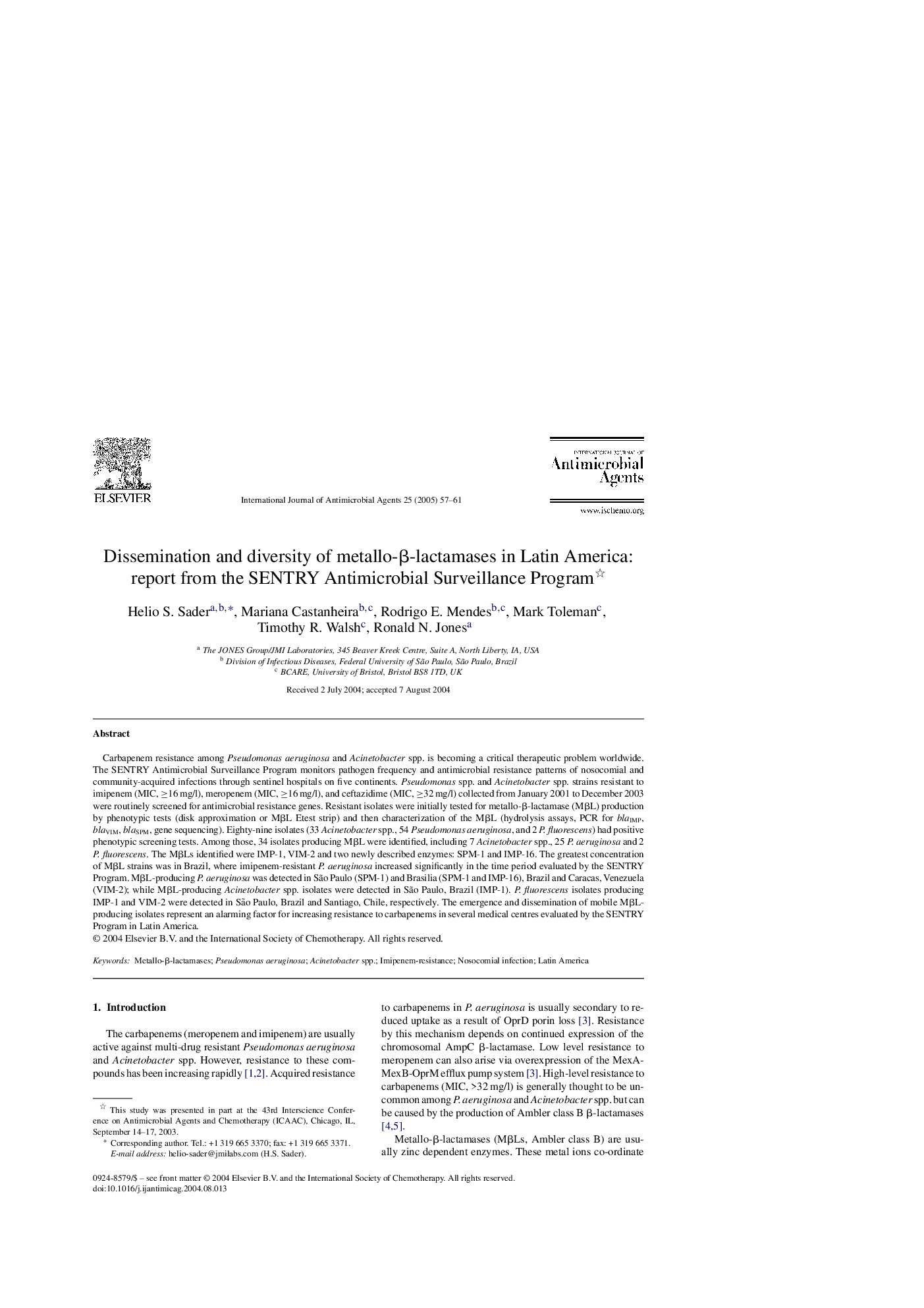| Article ID | Journal | Published Year | Pages | File Type |
|---|---|---|---|---|
| 10028016 | International Journal of Antimicrobial Agents | 2005 | 5 Pages |
Abstract
Carbapenem resistance among Pseudomonas aeruginosa and Acinetobacter spp. is becoming a critical therapeutic problem worldwide. The SENTRY Antimicrobial Surveillance Program monitors pathogen frequency and antimicrobial resistance patterns of nosocomial and community-acquired infections through sentinel hospitals on five continents. Pseudomonas spp. and Acinetobacter spp. strains resistant to imipenem (MIC, â¥16 mg/l), meropenem (MIC, â¥16 mg/l), and ceftazidime (MIC, â¥32 mg/l) collected from January 2001 to December 2003 were routinely screened for antimicrobial resistance genes. Resistant isolates were initially tested for metallo-β-lactamase (MβL) production by phenotypic tests (disk approximation or MβL Etest strip) and then characterization of the MβL (hydrolysis assays, PCR for blaIMP, blaVIM, blaSPM, gene sequencing). Eighty-nine isolates (33 Acinetobacter spp., 54 Pseudomonas aeruginosa, and 2 P. fluorescens) had positive phenotypic screening tests. Among those, 34 isolates producing MβL were identified, including 7 Acinetobacter spp., 25 P. aeruginosa and 2 P. fluorescens. The MβLs identified were IMP-1, VIM-2 and two newly described enzymes: SPM-1 and IMP-16. The greatest concentration of MβL strains was in Brazil, where imipenem-resistant P. aeruginosa increased significantly in the time period evaluated by the SENTRY Program. MβL-producing P. aeruginosa was detected in São Paulo (SPM-1) and Brasilia (SPM-1 and IMP-16), Brazil and Caracas, Venezuela (VIM-2); while MβL-producing Acinetobacter spp. isolates were detected in São Paulo, Brazil (IMP-1). P. fluorescens isolates producing IMP-1 and VIM-2 were detected in São Paulo, Brazil and Santiago, Chile, respectively. The emergence and dissemination of mobile MβL-producing isolates represent an alarming factor for increasing resistance to carbapenems in several medical centres evaluated by the SENTRY Program in Latin America.
Keywords
Related Topics
Life Sciences
Immunology and Microbiology
Applied Microbiology and Biotechnology
Authors
Helio S. Sader, Mariana Castanheira, Rodrigo E. Mendes, Mark Toleman, Timothy R. Walsh, Ronald N. Jones,
